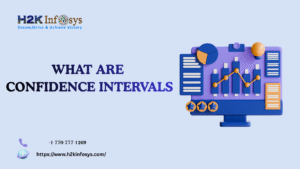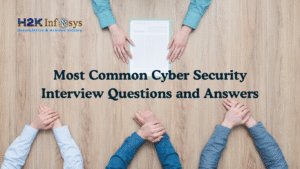Introduction
In today’s fast-paced digital world, employees have easy access to countless apps, software, and cloud services. While this helps them work faster, it also creates a serious risk: Shadow IT.
Shadow IT refers to any IT system, application, or service used within an organization without the approval or oversight of the official IT department. It might sound harmless when someone downloads a new tool to improve productivity, but that unapproved software can expose sensitive data, violate compliance laws, and open the door to cyberattacks.
If you’re aiming for a secure tech career, understanding Shadow IT is essential. At H2K Infosys, our Cyber security training and placement programs include real-world instruction on how to detect and manage Shadow IT risks in professional environments.
Shadow IT
Shadow IT is growing faster than most businesses realize. With employees empowered to find their tech tools, IT departments are often left in the dark. From file-sharing apps to communication platforms, every piece of unauthorized software increases the complexity and risk of managing digital assets.
Real-World Examples of Shadow IT
Here are some practical examples of Shadow IT you might recognize:
- A finance team using a personal Google Sheet instead of the enterprise-approved budgeting tool.
- A marketing intern is using a design app that hasn’t been vetted for data security.
- A project manager syncing files through a personal Dropbox or iCloud account.
In each of these cases, It introduces significant risks. Data might be stored in insecure environments, shared with unauthorized people, or lost altogether.
According to an IBM study, 1 in 3 security breaches are caused by Shadow IT, either directly or indirectly.

Why Shadow IT Happens
Employees don’t always intend to break security protocols. Often, Shadow IT stems from:
- Lack of awareness about approved tools
- Desire for more efficient or user-friendly software
- Delays in the IT approval process
- Remote work challenges
The reality is simple: when people feel their tech needs aren’t being met, they turn to Shadow IT. That’s why proactive communication and quick IT support are vital in preventing it.
Shadow IT Risks and Security Threats
Unchecked, can lead to devastating outcomes. Here’s why organizations should take it seriously:
1. Increased Vulnerabilities
Apps and services introduced through Shadow IT typically lack encryption, multi-factor authentication, or secure access protocols. Hackers target these weak points to gain entry.
2. Compliance Issues
The usage can bypass important legal protections. Organizations regulated by GDPR, HIPAA, or SOX face fines if data is mishandled through unauthorized apps.
3. Data Leakage
When employees use unauthorized platforms, there’s no guarantee of secure data storage or backup. Once lost or deleted, critical data may be unrecoverable.
4. Operational Inefficiency
When different departments use different tools, collaboration breaks down. It can create silos, duplicate data, and complicate workflows.
Through cyber security training courses, professionals learn how to identify these risks and implement controls.
Shadow IT in Cloud-Based Workplaces
Cloud environments have fueled the growth of Shadow. Employees can easily subscribe to free or low-cost SaaS tools, often without realizing they’re creating risk.
Common examples include:
- Online survey tools store customer data
- Non-approved project management apps for tracking company deadlines
- Free screen recorders are used to capture sensitive client meetings
Because these tools are web-based, they often slip past traditional IT controls. This new wave of cloud-based Shadow IT is especially hard to detect without advanced monitoring tools and policies.
Detecting Shadow IT: Key Indicators
To control Shadow IT, organizations first need to detect it. Some of the most effective strategies include:
- Firewall and DNS Monitoring: Analyzing traffic logs helps uncover unfamiliar domains and service endpoints.
- Cloud Access Security Brokers (CASBs): These act as a gatekeeper between employees and the cloud, alerting IT to unsanctioned usage.
- Employee Surveys: Anonymous forms can reveal usage honestly, without fear of punishment.
- Endpoint Detection Tools: These help track app installations and usage on employee devices.
In our cyber security training with job placement courses, we simulate such detection methods in real-world lab exercises to ensure hands-on skill building.
Preventing Shadow IT Through Policies and Culture
Eliminating it is difficult, but minimizing it is achievable with the right approach:
1. Develop Clear Policies
Outline which tools are permitted, what data can be shared, and who can approve software requests.
2. Improve IT Responsiveness
Make it easy for employees to request new tools or features. Fast turnaround encourages them to follow the process rather than bypass it.
3. Ongoing Education
Train staff on the dangers of Shadow and how it affects security and compliance.
4. Create a Culture of Security
Empower users to be security-conscious. Recognize employees who follow protocols and contribute to safe tech use.
All of these elements are addressed in the Cyber security course with placement programs offered by H2K Infosys.
Tools That Help Control Shadow IT
Several technologies are available to manage and restrict Shadow. These include:
| Tool | Purpose |
| CASB (Cloud Access Security Broker) | Monitors cloud app usage |
| SIEM (Security Information and Event Management) | Detects abnormal behavior |
| DLP (Data Loss Prevention) | Stops sensitive data leaks |
| IAM (Identity Access Management) | Controls who accesses what systems |
Mastery of these tools is an essential skill taught in our cyber security training near me programs.
Compliance and Shadow IT
One of the biggest risks of Shadow IT is violating compliance frameworks such as:
- GDPR (General Data Protection Regulation)
- HIPAA (Health Insurance Portability and Accountability Act)
- PCI DSS (Payment Card Industry Data Security Standard)
If the tools are used to process sensitive customer data, and they’re not compliant, the business becomes legally vulnerable. That’s why cyber security training courses should include modules on both data security and compliance risk management.
Role of Cybersecurity Professionals in Controlling Shadow IT
Professionals trained in cyber security must act as watchdogs and educators. Their responsibilities include:
- Tracking all network activity for signs of Shadow
- Configuring alerts and policies that block or sandbox risky tools
- Creating educational content to inform teams
- Collaborating with leadership to streamline tool approval processes
At H2K Infosys, we focus on giving students these capabilities through practical labs and career-ready instruction in every cyber security course with placement.
Learn Shadow IT Strategies in Cyber Security Training
Our expert-designed courses at H2K Infosys don’t just teach theory. We provide hands-on, scenario-based training where students learn how to:
- Identify Shadow across networks
- Build and enforce compliance policies
- Use DLP, CASB, and SIEM tools effectively
- Conduct post-incident analysis and Shadow IT cleanup
If you’re looking for Cyber security training near me or aiming to boost your job prospects, H2K Infosys’ training programs are built to prepare you for real-world challenges.
Conclusion
Shadow IT isn’t a minor issue it’s a growing cyber security concern that demands expert attention. With remote work, cloud adoption, and a tech-savvy workforce, managing Shadow IT is now a key responsibility for every organization.
Key Takeaways:
- Shadow includes all unauthorized software or systems used within a business.
- It can lead to data breaches, non-compliance, and operational confusion.
- Managing Shadow requires policies, monitoring tools, and awareness training.
- Cybersecurity professionals play a critical role in identifying and controlling Shadow.
- Courses at H2K Infosys prepare you with real skills for handling Shadow IT in the workplace.























